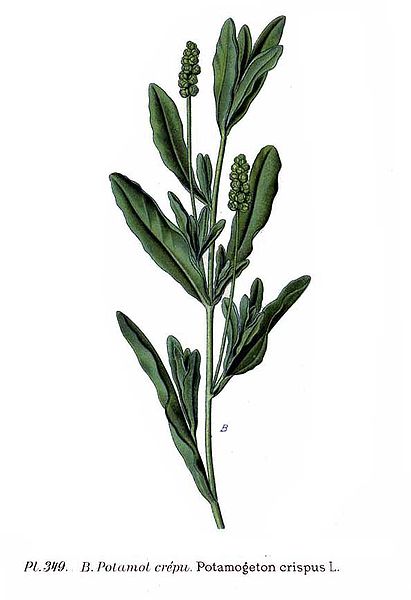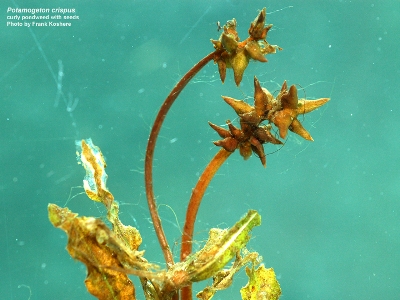Feel it in the Air...Or Water (Reproduction)

Curly leaf pondweed can do it BOTH ways.
In general, asexual reproduction is important for propagation and distribution of curly leaf pondweed within a growing season. This reproduction strategy is also relied upon for winter survival. Sexual reproduction provides an opportunity for genetic recombination, dispersal through seed formation, and the possibility of escape or adaptations to environmental stress.
When safe, this plant undergoes asexual reproduction through fragmentation; pieces of the stem split off and grow into a new genetic replica of the original plant. These fragments can be carried by wind, water, animals (like muskrats), and humans to new areas that have been untouched by this invasive species.

Under stressful conditions, however, this submerged macrophyte undergoes sexual reproduction to increase offspring variability. This increases potential for survival as the environment changes or the species begins to invade a new environment.
Fertilization occurs at the water surface. The seeds are
small and viable for several years. Once they mature, they
sink to the soil and remain dormant until favorable
conditions arise. Curly leaf pondweed produces more
seeds in adverse conditions (like drought, cold, and extreme
salinity) to increase the possibility of germination. These
seeds can be carried to new locations by water, animals, and
people, much like how fragments are dispersed during asexual
reproduction.
Curly leaf pondweed also has developed INTENSE
overwintering strategies that allow it to out-compete its
competitors. During
the fall, this plant begins to form
multiple turions, or small fragments with leaves, that can
live throughout the winter and begin to grow when signals
from light and water temperature tell them the time is right. In most years, these turions begin developing into young curly leaf pondweed
plants MONTHS before other subme
rged macrophytes start to
develop.
Other adaptations of curly leaf pondweed during the
winter months include survival of the whole plant throughout
the winter, re-growth of rhizomes and roots that may have
died off, as well as seeds protected by an endocarp!
"This organism is simply fascinating! I just can't wait to learn more!" Continue on find out about curly leaf pondweed's community INTERACTIONS!